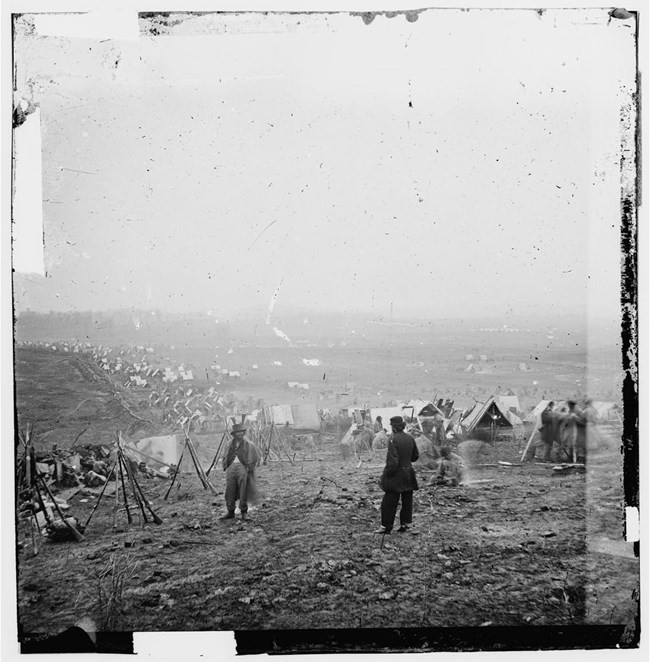Last updated: September 19, 2024
Article
Protecting the Common Legacy of the Battle of Nashville and the City’s Historic Bass Neighborhood

Courtesy of the Library of Congress
Recipient: Metropolitan Government of Nashville & Davidson County
Amount: $4,128,439.50
Acres: 2.36
Fighting on the defensive at the Battle of Franklin just two weeks prior, the Union Army under Major General George H. Thomas had inflicted significant casualties on the Confederate Army of the Tennessee and decimated its command structure, killing or wounding over 60 Confederate field officers, including 14 generals. This tactical Union victory created a type of strategic paralyses on the part of the Confederate leadership. As a result, Confederate General John B. Hood ordered the Army of the Tennessee to advance on the Union stronghold of Nashville on December 2nd, 1864, despite the army lacking enough men and supplies to attack the city directly.
Unable to attack, and unwilling to retreat due to a fear of losing what remained of his army’s morale, Hood instead dug-in south of Nashville, hoping to lure Thomas into ordering a frontal assault like the one Hood had made at Franklin. That attack never came. Instead, the Union Army attacked both Confederate flanks on December 15th and 16th, taking key positions through the efforts of the US Colored Troops of Steedman’s Division, forcing Hood to withdraw, and ending the Army of Tennessee’s use as an effective fighting force for the remainder of the war.
Using the financial support of a Battlefield Land Acquisition Grant, the local government of Nashville and Davidson County, Tennessee, will now preserve a portion of the Nashville Battlefield and its direct connection to the historic Bass neighborhood, one Nashville’s earliest free Black communities. Established after the Civil War, the Bass neighborhood emerged through the determined efforts of former slaves, free Black laborers, and returning veterans of the US Colored Troops to lay down roots and create a thriving Black neighborhood in the city during reconstruction. Many of whom served-in or helped to construct the city’s defenses during the war. These efforts continued into the civil rights period, expanding the area into a modest district of Black homes, small businesses, and industrial buildings. However, only remnants of those buildings and the neighborhood remain today. A legacy that the local government intends to protect along with the battlefield.
Battlefield Land Acquisition Grants from the National Park Service’s American Battlefield Protection Program empower preservation partners nationwide to acquire and preserve threatened Revolutionary War, War of 1812 and Civil War battlefields. In addition to this grant opportunity, the program provides financial assistance for related projects through Battlefield Interpretation Grants, Battlefield Restoration Grants, and Preservation Planning Grants, generating community-driven stewardship of historic resources at the state, tribal and local levels.
